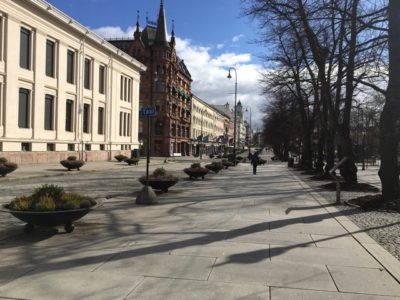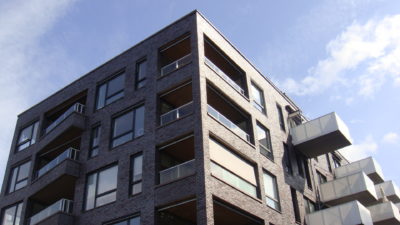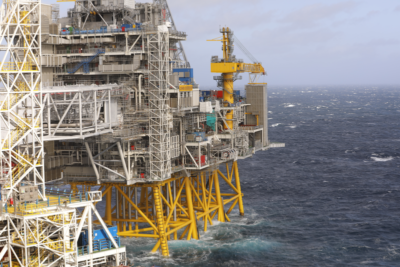Seven weeks after the government shut down much of Norway, economists are sending out new gloom and doom predictions even as some businesses start opening up again. Prime Minister Erna Solberg is promising yet another crisis aid package before the summer holidays set in.

The empty streets of Norwegian cities and towns could finally liven up a bit on Monday. That’s when hair salons and barber shops could open for business again, and many Norwegians lined up to get long-overdue haircuts.
The discount chain Cutters was so overburdened in the morning hours that its website crashed, and some shops in central Oslo were listing estimated waiting times of nearly two hours. State broadcaster NRK reported that in Fredrikstad, hair dressers arrived at work to find eager customers standing outside in the rain, waiting for them to open.
Demand for service was high, and income began flowing in again after being abruptly shut off in mid-March. Too many other businesses, however, either remain closed (like cinemas, theaters, restaurants and bars) or dramatically pared back (like airlines and hotels). In some cases demand for products like oil or even services like flying off to New York for the weekend isn’t expected to come back.
Biggest decline predicted since 1979
That’s what’s now prompting some of the gloomiest economic outlooks in 40 years if not longer. State statistics bureau SSB (Statistics Norway) released a study just before the weekend that predicts the biggest decline in real income since 1979, coupled by high unemployment. Others are predicting a deep recession, the likes haven’t been seen since the Great Depression of the 1930s.
At the very least, according to the chief economist at Norway’s biggest bank DNB, uncertainty will plague markets and households for a long time to come. Not even Norway, well-equipped for a downturn because of its traditionally strong economy and huge sovereign wealth fund, will escape the ravages of the Corona virus crisis.

On Monday, the state institute for consumer research (SIFO) at OsloMet University released a study showing that nearly 10 percent of Norwegian households had financial problems just three weeks after the Corona containment measures were imposed. Norwegians aren’t known for being big savers, and high household debt levels have been a concern for years. The combination seems to have left many (192,000 households, according to SIFO) unable to pay all their bills as soon as their income stopped.
Some probably were already having problems, or living beyond their means, but hundreds of thousands of Norwegians suddenly lost income in March. Even though the state is covering as much as 80 percent of lost income, most wage-earners’ benefits will be less than that and they will still suffer severe income shortfalls.
In addition to the 8 percent of Norwegian households having problems, another 30 percent (720,000) are likely to develop problems if income losses continue. SIFO’s study showed that 62 percent of Norwegian households are secure, with enough assets to withstand income losses and debt under control. Only around 20 percent of Norwegian households are debt-free.
Hit on three fronts:
“Unemployment will be high and lasting because the Norwegian economy is being hit on three fronts,” said Thomas von Brasch, a researcher at SSB. “Many businesses are closed down (by Corona containment measures), similar measures in other countries are reducing demand for exports from Norway, and we have a much lower oil price. Any one of these factors could create an economic crisis on its own.”
With all three of them hitting at the same time, a lasting economic crisis appears unavoidable. Von Brasch tempered his remarks by saying that most people will hang on to their jobs, but will suffer income declines in real terms. Since the economic crisis is global, businesses vulnerable to foreign competition will be under severe profit pressure. That in turn will affect what they can pay Norwegian workers.

With Norwegian industry facing meager years ahead because of falling oil prices (down again to just over USD 20 a barrel on Monday), household income won’t rise much if at all. SSB predicts consumption will sink by nearly 10 percent this year alone. Much of that is tied to the government’s “stay-home” orders, and the fact that many stores and restaurants, for example remain closed. There doesn’t seem to be as much to spend money on, apart from fixed monthly expenses (like rent or mortgage payments and utilities).
This year’s annual negotiations between the Norwegian labour and employers’ organizations were postponed until this fall. SSB now predicts pay growth of 2 percent, reduced by price growth of around 0.8 percent thanks to record low electricity rates. Next year, however, real pay growth is expected to be negative, at minus-1.8 percent, the steepest decline since 1979.
From record highs to lows
“We’re talking about a marked downturn in real terms in 2021,” von Brasch told newspaper Dagens Næringsliv (DN). Kjersti Haugland, chief economist at DNB Markets, said SSB’s pay projections “sound reasonable.”
Low interest rates (which were cut to just 0.25 percent when the Corona crisis hit Norway in full last month) will help, but Haugland thinks uncertainty will permeate markets, businesses and households. “Those who hang on to their jobs won’t get the normal pay raises they’ve had,” Haugland told DN. “Prices will rise, not least because of the weakness of the Norwegian currency.”

It’s important to note that before the Corona crisis hit, Norwegians literally seemed to fly into 2020 in first class. Oil and the seafood businesses were booming (the latter is still doing well) and another SSB study showed that Norwegians’ material standard of living had never been so high.
Consumption was up 50 percent from 2000, according to newspaper Aftenposten’s weekly magazine A-magasinet. Its last issue of 2019 reported on how Norwegians flying off on holidays boosted their consumption abroad by 161 percent since 1999. Every household owned more than one vehicle on average, average pay had risen 44 percent to NOK 575,000 per year, 26 percent of Norwegians owned a second holiday home and the number of people passing through Norwegian airports rose by 71 percent.
SSB’s numbers cite by A-magasinet also showed a 234.4 percent increase in sales of Champagne since 1999, and it was up 12 percent just from 2018 to 2019. Clothes and shoes were also piling up in Norwegian closets, with consumption up 212.4 percent at a time when prices for clothing and shoes had declined.
The bottom line showed lots of money, or at least credit cards, in Norwegian homes that also became steadily pricier and more lavish. Tom Elliot Johnsen of real estate brokerage Sem & Johnsen had excitedly told DN on New Year’s Eve that 2019 was a “brilliant” year in the real estate market. “Never before has it been easier to sell so many costly properties,” Johsen told DN. He expected the high prices and quick turnover to continue this year, but then came Corona. Predictions are mixed as to its effect on the housing market. Commercial property is already seeing trouble with tenants struggling to meet monthly lease payments when their businesses are shut down.
Slowing down spending
There were signs earlier this year that Norwegians were already slowing down their spending, not because of economic problems but because of climate concerns. It wasn’t as acceptable, suddenly, to fly off on the weekends, eat so much red meat and drive fancy SUVs. A survey conducted by Response Analyse for the organization Fremtiden i våre hender (The Future in Our Hands) and released in February showed that fully 70 percent of Norwegians questioned said they were willing to reduce their consumption to help reverse climate change. Newspaper Dagsavisen, reporting on the survey, wrote that many were already flying and shopping less, while yet another study by Ipsos for DNB showed 17 percent of Norwegians intended to spend less money in 2020, 10 percent aimed to stop shopping and 9 percent intended to buy more used items instead of brand-new merchandise
Last year’s Christmas shopping season was also disappointing for merchants. Jan Ludvig Andreassen, chief economist at Eika Gruppen, called the season “catastrophic” after retail sales fell 2 percent from 2018. Many Norwegians opted to give “experiences” instead of things, with concert tickets and vouchers for dinners out popular under the tree.

The new predicted recession may simply firm up such trends, but as a matter of need, not choices. There are still, however, Norwegians who are responding to the difficulty of traveling abroad on holidays during Corona times by buying boats instead. DN reported Saturday that Grimstad Båtsenter on Norway’s south coast and in Asker is just one boat dealer reporting record high orders placed for new boats. Sales initially stalled when the Corona crisis hit, and it also laid off workers, but the downturn didn’t last long. “When the prime minister predicted that foreign travel this year is unlikely, sales took off,” Anders Topland of Grimstad Båtsenter told DN. It helped that there’s been lots of sunshine and warm weather in Southern Norway in recent weeks.
Prime Minister Solberg is nonetheless speaking already about another phase of state relief measures aimed at getting Norway’s economy back in gear. Her goverment’s first phase was aimed at enhancing unemployment benefits and offering cash relief for businesses to ward off bankruptcies. Next came packages aimed at helping industries hit the hardest, like airlines and tourism.
Now Solberg’s finance minister, Jan Tore Sanner is working on “Phase Three,” comprised of incentives to spur activity after two months of idleness. Sanner is already promoting the stimulus packages to opposition parties’ Parliamentary delegations. The new programs, being developed in conjunction with various industries and entrepreneurial organizations, are likely to be rolled out after the revised state budget is presented in May, but before the summer recess.
newsinenglish.no/Nina Berglund

